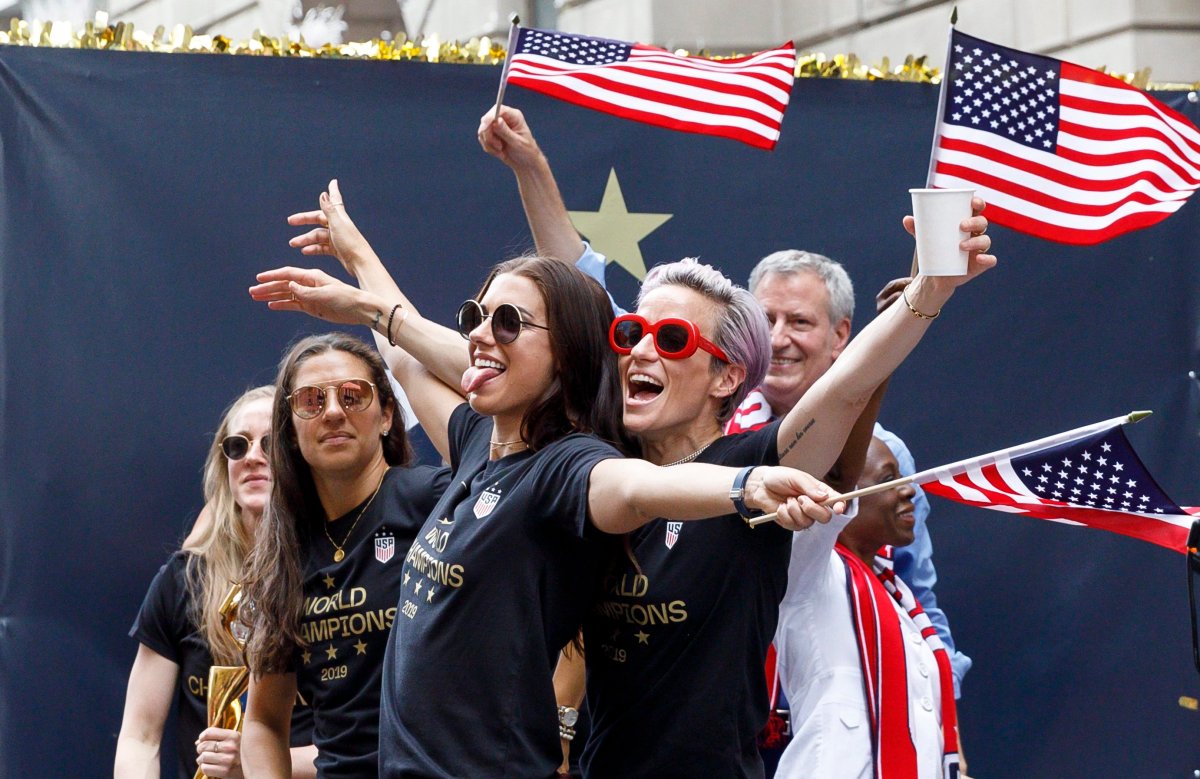By now, you have likely heard about the efforts of the United States women’s national soccer team to achieve equal pay with their male counterparts.

The team celebrated its second consecutive — and record fourth — World Cup title on Wednesday with a parade in New York City. Fans who attended the event chanted “equal pay” when U.S. Soccer Federation (USSF) president Carlos Cordeiro addressed the crowd.
Once the chanting died down, Cordeiro said: “We believe all female athletes deserve fair and equitable pay, and together, I think we can get this done.”
WATCH: U.S. Women’s World Cup champions honoured with ticker-tape parade in NYC

The comment comes about four months after the team’s 28 players launched a gender discrimination lawsuit against the United States Soccer Federation, alleging they are paid less than the U.S. men’s team despite winning more games, registering higher TV ratings and bringing in more revenue.
The two sides have agreed to mediation in an effort to resolve the dispute out of court.
But the question is, is equal pay even achievable?
When analyzing game revenue between 2016 and 2018, the U.S. women’s games generated roughly $50.8 million compared to the $49.9 million brought in by games the American men played in. It’s worth noting, however, that in 2018 alone, the women played almost twice as many games as the men did.
The issue the USSF must iron out boils down to how the players are paid. Right now, players earn a big portion of their pay through bonuses, the amounts of which can easily be controlled by the federation when the two teams are playing friendlies, or exhibition games.
However, it gets much more complicated when FIFA, soccer’s world governing body, puts on its major international events.
WATCH: U.S. Women’s soccer fights for equal pay for equal play

For example, the pool of money is substantially larger for the men’s World Cup compared to the women’s tournament, both of which are held every four years, due to a massive disparity in sponsorship dollars, merchandise sales, broadcast rights fees and tickets sales.
According to Forbes, the just-completed 2019 Women’s World Cup in France is estimated to have generated $131 million, $30 million of which was shared by all the players in the tournament and $4 million of which went to the champion Americans.
The 2018 men’s World Cup in Russia — for which the U.S. men’s team didn’t even qualify — churned out more than $6 billion in revenue and had a $400-million pool of money for the players, with France’s championship-winning squad sharing $38 million, Forbes reported.
The U.S. has also played host or co-host to every CONCACAF men’s Gold Cup tournament, which is held every two years, since 1991. Should the USSF take the revenues generated from the U.S. men’s World Cup qualifying games, World Cup appearances and the Gold Cup — out-of-whack bonus structure and all — and share the wealth with the women?
The U.S. women’s national soccer team deserves to be paid as much as the men’s side, however I think it is going to be extremely difficult to make that a reality.








Comments